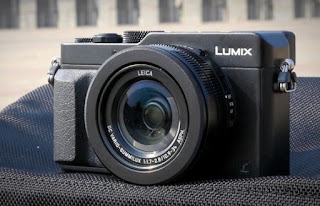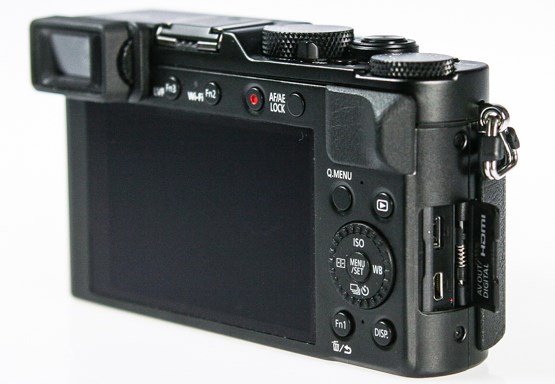New Panasonic lumix camera LX100 review
New Panasonic lumix camera LX100 review - The opposition among premium smaller cameras has never been fiercer. Greater sensors and brighter lenses are pushing up picture quality, execution is rising and the nature of their controls and viewfinders is putting some SLRs to disgrace. It's a significant accomplishment, then, that the Panasonic LX100 is serenely the most great premium reduced we've seen. Discharged toward the end of 2014, this phenomenal camera wowed us, it's dropped in cost from that point forward as well, and keeps on being the minimal camera to beat - despite the fact that the new Canon G7 X is a solid contender.Panasonic LX100 review
 |
| Panasonic LX100 review |
lumix compact camera reviews
The LX 100's light-assembling capacity sets another high for a minimal camera with a zoom lens. While rival cameras, for example, the Sony RX100 III utilize a 1in sensor, the LX100's Micro Four Thirds sensor is twofold the size by surface region. That doesn't recount the entire story, as the camera doesn't utilize the greater part of the sensor's surface region to catch a photograph. The usable range changes relying upon the chose perspective proportion; for 4:3 photographs, the sensor size is successfully 50 for every penny greater than the RX100 III's. This produces 12.5-megapixel photographs from the 16-megapixel sensor. This may seem like a downside, however the lens would have been a lot bulkier in the event that it needed to cover the whole sensor zone.
lumix 4k video
Variable that in, and the LX100's viable sensor size is littler than that of the Canon G1 X Mark II. On the other hand, sensor size is one and only figure a camera's capacity to catch light. The LX100's f/1.7-2.8 opening is brighter than the Canon's f/2-3.9 lens, and is sufficient to put it out in front.
That implies a shallower profundity of field for complimenting pictures, and it puts the LX100 on course for class-driving picture quality in low light. Its opening and sensor mix are identical to f/3.7-6.2 on a full-casing camera, so it's not outlandish to think about this as full-edge quality in a pocket-size camera. It's a remarkable specialized accomplishment, more so considering that optical adjustment is inherent. panasonic fz40
 |
| Panasonic LX100 review |
Calling the LX100 pocket measured may be somewhat of a stretch, however. Measuring 70mm from its lens top to its viewfinder, it pretty much presses into trouser pockets yet fits all the more serenely in a coat stash or sack. It accompanies a neck instead of a wrist strap. At 407g, it's lighter than the Canon G1 X Mk II (557g) yet not as svelte as the Sony RX100 III (288g).panasonic -kijiji
On the other hand, the Sony RX100 III doesn't offer such a large number of physical controls. The LX100 has a gap ring on the lens and dials on the top plate for screen speed and introduction pay. Similarly as with different late Fujifilm cameras, having committed opening and shade speed controls means there's no requirement for a PASM mode dial, as you can essentially change the applicable control specifically or leave both on A for Program mode. There's likewise a committed catch to override all settings and put the camera into Intelligent Auto mode.
 |
| Panasonic LX100 review |
A second lens ring is allocated to zoom as a matter of course, in spite of the fact that we discovered it frustratingly ease back to navigate the 3.1x zoom range. It felt less demanding to utilize the lever around the shade catch for zooming obligations, arranging for the lens ring for ISO speed, white equalization or innovative channels. This ring has very much a free development, however, so there's a reasonable danger of pushing it unintentionally. It worked brilliantly for manual concentrate, however, adequately helped by an amplified picture-in-picture zone while making conformities and a topping alternative that highlights forcefully engaged parts of the edge.
With devoted catches for inventive channels, AE/AF lock, ISO speed, white equalization, self-adjust mode and drive mode, in addition to three customisable catches and an exquisite Quick Menu framework, access to manual controls is to a great degree liquid. On the other hand, we're disillusioned that the LCD screen isn't touch touchy. Other Panasonic cameras make extraordinary utilization of their touchscreens for moving the self-adjust point and exploring the Quick Menu. The LX100 is pressed with complex self-adjust modes including quick subject following, the capacity to position the spot center range directly into the corners and to change its size from a pinpoint to very nearly the full edge stature. Then again, without a touchscreen these elements are somewhat awkward to get to. The screen isn't explained either – a component we esteem profoundly, and one that the opponents from Sony and Canon both offer.
The blaze has been spun off as a separable unit, which appears like a sensible bargain to hold the size down. We're happy to see that it sits in a standard hotshoe, so an all the more intense flashgun or remote trigger can be utilized. The supplied unit is appraised at Guide Number 7 at ISO 100, which is no brighter than most incorporated flashes. On the other hand, it acted strangely in our tests, with an On/Off switch that worked backward and major issues with glimmer metering. The blaze's firmware is at form 0.4 on our test, so ideally these issues are either atypical or will be resolved when the camera achieves the shops.
See also nikon samsung canon sony
Panasonic's Wi-Fi execution is at least somewhat great, full control over photographic settings in remote viewfinder mode – including touchscreen self-adjust control. This is especially welcome while catching video. We additionally acknowledge how both the camera and the application's controls are available in the meantime – most cameras permit one or the other. There's a stop-movement activity catch mode, complete with the capacity to change over a succession of photographs into a video record. A geo-labeling highlight utilizes the cell phone's GPS capacity to make a log and after that reflectively label photographs on the camera.
Execution was truly quick in our tests. It centered and caught a photograph in around 150ms all things considered, and stayed responsive and exact in low light. Photographs were caught at regular intervals in typical use. Persistent mode kept running at 11.6fps for 96 JPEGs or 23 RAW casings before abating. Selecting ceaseless self-adjust conveyed speeds somewhere around 5.9fps and 4.3fps, contingent upon the topic and light conditions. These outcomes are up there with the best we've seen. The moderately humble 24-75mm (proportionate) central length range implies this isn't generally a camera for activity photography,
thanks for reading :)
Comments
Post a Comment